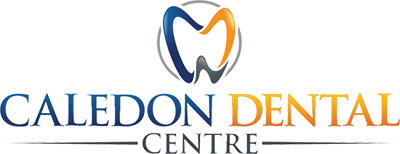Blog
Emergency Dentist in Caledon: True Cost of Dental Emergencies
December 6, 2025 / DENTISTRY

Dental emergencies can strike at any time
Cost Comparison: Prevention vs Emergency Dentist in Caledon Treatment
Dental emergencies can strike at any time, often resulting in significant pain and unexpected expenses. Understanding the true cost difference between preventive care and emergency treatment helps Caledon families make informed decisions about their oral health. At Caledon Dental Centre, the team sees firsthand how small, preventable issues can escalate into costly emergency situations requiring an emergency dentist in Caledon. The financial impact of dental emergencies extends far beyond the immediate treatment costs. Emergency procedures often require multiple visits, specialized treatments, and time off work, creating a cascade of expenses that preventive care could have avoided.
Preventive Care Costs
- Regular Cleaning and Examination: Routine cleaning: $150-200; Comprehensive exam: $75-100; X-rays (when needed): $100-150; Total annual preventive cost: $400-600 per person
- Early Intervention Treatments: Small filling: $150-250; Fluoride treatment: $50-75; Dental sealants: $40-60 per tooth; Periodontal maintenance: $200-300
Emergency Treatment Costs
- Common Emergency Procedures: Root canal treatment: $800-1,500; Dental crown: $1,000-1,800; Tooth extraction: $200-600; Emergency visit fee: $150-300; Pain management prescriptions: $50-100
- Complex Emergency Situations: Dental implant replacement: $3,000-5,000; Emergency oral surgery: $1,500-3,000; Full mouth reconstruction: $15,000-40,000; Hospital emergency room visit: $500-2,000 (plus dental follow-up)
Real Examples: How Small Problems Become Expensive Emergencies
- Case Study 1: The $50 Problem That Became $3,000 — A small cavity costs $150-250 to fill. Ignored, it may require root canal ($1,200), crown ($1,500), and emergency visits ($300), increasing the cost from $200 to over $3,000.
- Case Study 2: Gum Disease Progression — Early treatment: $200-300. Untreated: Scaling/root planing $800-1,200; periodontal surgery $1,500-3,000; tooth replacement $3,000-5,000 per tooth.
- Case Study 3: Cracked Tooth Scenarios — Early bonding: $200-400. Ignored: Emergency visit $200-300; root canal $1,200-1,500; crown $1,500-1,800; possible extraction/implant $4,000-6,000.
Insurance Considerations: Emergency vs Routine Care
- Preventive Care Coverage: Most plans cover 80-100% of cleanings, exams, X-rays, and child fluoride treatments.
- Emergency Treatment Coverage: Basic restorative: 70-80%; Major procedures: 50%; Annual max: $1,000-2,000; Deductibles: $50-100.
- Coverage Gaps and Limitations: Annual max used quickly; Waiting periods may apply; Out-of-network emergencies cost more.
Hidden Costs of Dental Emergencies
- Time and Productivity Loss: Work disruption, follow-ups, recovery time, childcare issues
- Secondary Health Impacts: Medications, complications, nutrition issues, stress effects
- Long-term Financial Consequences: Ongoing maintenance and replacement for major treatments
Prevention Strategies That Save Money
- Regular Dental Visits: Early detection prevents emergencies
- Daily Oral Hygiene: Proper brushing, flossing, fluoride toothpaste, avoiding sugary foods
- Protective Measures: Mouthguards, night guards, avoiding harmful habits, addressing dental anxiety
When to Seek an Emergency Dentist in Caledon
- True Dental Emergencies: Severe pain, facial swelling, knocked-out teeth, uncontrolled bleeding, infection signs
- Urgent but Non-Emergency Situations: Lost fillings or crowns with pain, broken teeth, mild-moderate toothache, loose dental work
Making Smart Financial Decisions
- Budgeting for Dental Care: $100-150 monthly covers most routine needs
- Payment Options: Dental savings plans, payment plans, HSA accounts, healthcare financing
Your Prevention Partner in Caledon
At Caledon Dental Centre, located at 12570 Kennedy Road, Unit #10, Caledon L7C 4C4, the team focuses on preventing dental emergencies through comprehensive preventive care. The practice offers extended hours, including weekdays from 11:00 AM to 7:00 PM and weekends from 9:00 AM to 4:00 PM, making preventive care convenient for busy families.
Don't wait for a dental emergency to strike. Contact the office at 905-843-2500 or email info@caledondentalcentre.com to schedule your preventive care appointment. Investing in prevention today saves money, pain, and stress tomorrow.
Cost Disclaimer: All cost figures mentioned in this article are estimates based on average dental treatment costs in Ontario and may vary depending on individual circumstances, treatment complexity, and specific dental practices. Actual costs may differ from these estimates. For accurate pricing information specific to your situation, please consult with your dental provider. Insurance coverage varies by plan and provider, and patients should verify their specific benefits with their insurance company.
Family Dentist in Caledon: New Family Checklist
November, 2025 / DENTISTRY

Moving to Caledon with Your Family: Establishing Dental Care
Moving to Caledon with your family brings exciting opportunities and new responsibilities. This includes finding the right family dentist in Caledon for your household. As Caledon continues to expand with new developments, many families discover the importance of establishing dental care quickly after their move.
At Caledon Dental Centre, the team understands the unique needs of relocating families. This comprehensive checklist helps families get everyone's dental care coordinated smoothly after moving to the area.
What to Bring When Choosing a Family Dentist in Caledon
Essential Documents Needed
- Dental Records for Each Family Member:
- Complete treatment history from previous dentist
- Recent X-rays (within 6 months if available)
- Ongoing treatment plans or recommendations
- Orthodontic records if applicable
- Insurance Documentation:
- Dental insurance cards for all covered members
- Policy numbers and benefit summaries
- Provider network information
- Annual maximum and deductible details
- Medical Information:
- Updated medical histories for each family member
- Current medications and dosages
- Known allergies or medical conditions
- Contact information for other healthcare providers
Record Transfer Process
Contact your previous dental office 7-10 business days before your appointment. Most offices can transfer records electronically to your new family dentist in Caledon. Recent X-rays prevent unnecessary radiation exposure and help your new dental team understand each family member's current oral health status.
Timeline for Establishing Care with Your Family Dentist in Caledon
- Week 1-2: Priority Scheduling
- Schedule appointments for family members with urgent needs first
- Address any pain or ongoing treatments immediately
- Book routine cleanings for children who haven't been seen in 6+ months
- Week 3-4: Comprehensive Evaluations
- Schedule remaining family members for initial consultations
- Allow your family dentist in Caledon to establish baseline health records
- Develop long-term treatment plans for each family member
- Month 2 and Beyond: Ongoing Coordination
- Coordinate regular cleaning schedules for the entire family
- Consider scheduling multiple family members on the same day
- Discuss scheduling preferences with your dental team
Insurance Considerations for New Families
- Network Verification: Confirm your chosen family dentist in Caledon participates in your insurance network. In-network providers offer lower out-of-pocket costs and streamlined claim processing.
- Coverage Understanding:
- Review annual maximum benefits and deductibles
- Track benefits already used if moving mid-year
- Understand waiting periods for major treatments
- Know which procedures require pre-authorization
- Payment Options:
- Flexible Spending Account (FSA) usage for dental care
- Health Savings Account (HSA) eligibility
- Payment plans offered by your family dentist in Caledon
- Insurance claim processing procedures
Special Considerations for Children and Teens
- Orthodontic Treatment Continuity: If children are currently in orthodontic treatment, coordinate the transfer carefully. Obtain all orthodontic records including treatment plans, progress photos, and appliance specifications. Your family dentist in Caledon can help facilitate communication between orthodontists.
- School Programs: Research school-based dental programs available in Caledon schools. Some programs offer screenings, fluoride treatments, or educational sessions. Coordinate with your family dentist in Caledon to ensure school programs align with individual treatment plans.
- Comfort and Anxiety Management: Children may need extra attention during the transition. Consider scheduling shorter introductory appointments to help them feel comfortable with their new dental team.
Making the Most of Your First Visit
- Questions to Prepare:
- Office policies and emergency procedures
- Appointment scheduling preferences
- Payment options and insurance processing
- Communication methods for follow-up care
- Treatment philosophy and approach
- Setting Expectations: Allow extra time for first appointments, especially for anxious family members. Your family dentist in Caledon should address concerns and explain procedures thoroughly. Discuss your family's dental goals and any specific treatment concerns.
- Emergency Preparedness: Dental emergencies don't wait for convenient timing. Having an established family dentist in Caledon ensures your family receives prompt, quality care when needed. Ask about after-hours emergency procedures and contact information during your first visit.
Your Caledon Dental Home
At Caledon Dental Centre, located at 12570 Kennedy Road, Unit #10, Caledon L7C 4C4, the team specializes in helping new families establish comprehensive dental care. The practice understands relocation challenges and works to make transitions smooth.
Extended hours accommodate busy moving schedules. The office is open weekdays from 11:00 AM to 7:00 PM and weekends from 9:00 AM to 4:00 PM.
Ready to establish your family's dental home in Caledon? Contact the office at 905-843-2500 or email info@caledondentalcentre.com to schedule your family's first appointments. The team looks forward to welcoming new families and helping maintain healthy smiles in the community.
Archive
- Emergency Dentist in Caledon: True Cost of Dental Emergencies
- Family Dentist in Caledon: New Family Checklist
- Dentist in Caledon: Stained to Stunning Whitening
- Dentist Accepting CDCP and ODSP: Complete Guide
- Tooth Extraction: Planning Your Smile's Future
- Dentist Open on Saturday and Sunday: Family Solutions
- Emergency Dentist in Caledon: 7 Signs You Can't Wait
- What Sets Our Caledon Family Dentist Apart? A Closer Look
- Dentist in Caledon: Dental Care for Seniors - What You Need to Know
- How to Take Care of Your Child’s Teeth Trough Pediatric Dentistry
- Wisdom Teeth: When and Why They Might Need to Be Removed
- The Benefits of Fluoride Treatments for Adults and Children
- Protecting Your Smile: The Importance of Mouthguards in Sports
- Debunking Common Myths About Dental Care: Separating Fact from Fiction
- Managing Tooth Sensitivity: Causes and Solutions
- The Surprising Link Between Oral Health and Heart Disease
- Proper Care and Maintenance of Dental Implants
- Exploring Cosmetic Dentistry: Procedures and Benefits
- The Benefits of Invisalign for Straighter Teeth
- The Connection Between Gum Health and Overall Well-being
- Unmasking Tooth Sensitivity: Causes, Treatment, and Prevention
- Choosing the Right Toothbrush and Toothpaste for Your Family
- Crowns, Bridges, and Dentures: Caring for Your Dental Restorations
- Dental Woes Begone: Common Dental Problems and Their Solutions
- The Importance of Regular Dental Check-ups: What to Expect
- 5 Benefits Of Wearing a Mouthguard for Contact Sports
- Myths and Facts About the Use of Fluoride in Dentistry
- Dental Emergencies: What You Need to Know
- Three Tips for Maintaining the Best Oral Hygiene and Building a Healthy Smile that Lasts
- Why it’s Time to Consider Professional Tooth Whitening
- Dental X-Rays: When and How Often Do You Need Them?
- The Differences Between Store-Bought and Custom-Fit Mouthguards
- Dental Care for Seniors
- Everything You Need to Know About Tooth Extractions
- Everything You Need to Know About Cold Sores
- The Importance of Straight Teeth
- Understanding Why You Need Dental X-Rays
- Everything You Need to Know About Oral Healthcare for Seniors
- The Importance of Oral Health to You Overall Wellness
- Tooth Whitening at Home with Your Caledon Dentist
- Helping you Build a Bright, Confident Smile
- Helping you Build a Bright, Confident Smile
- Everything You Need to Know About Root Canals
- Should You Have Your Wisdom Teeth Removed?
- When Brushing Just Isn't an Option
- Restore Your Smile with Natural-Looking Inlays and Onlays
- Why Regular Dental Check-ups Are Important to Your Health



